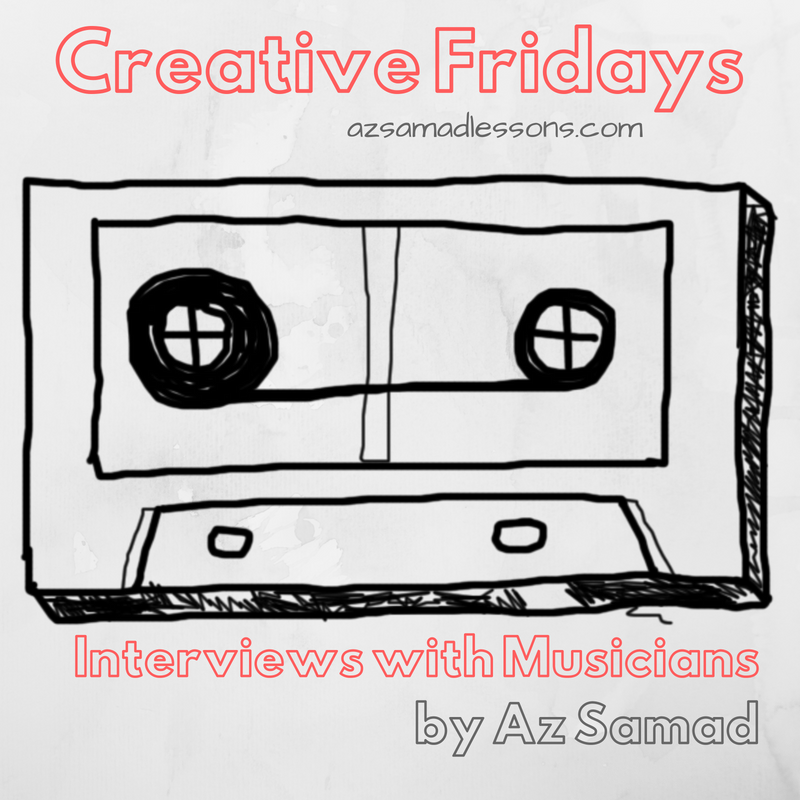

I performed with Scott Murphy for a John Dip Silas Trio last October. It was a great experience and I’ve been following Scott’s work since then. He’s been based in Kuala Lumpur for awhile now but is making a move to Hong Kong soon. Kuala Lumpur has been blessed to have him contribute to the local jazz scene and I’m very happy to feature him this week for our Creative Fridays interview. Let’s learn more about Scott!
Scott Murphy’s (b.1991) musical journey began at the age of twelve with the Dumfries Youth Jazz Group (DYJG) with whom he had the pleasure to play in Spain, France and Switzerland as well as on a BBC broadcast concert for The Big Gig with Julian Joseph.
Through his involvement with the DYJG Scott subsequently became lead tenor saxophonist with the National Youth Jazz Orchestra of Scotland (NYJOS) (playing with the likes of Mark Lockheart, Mike Walker, Malcolm Edmonstone and Chris Batchelor amongst others) and the Strathclyde Youth Jazz Orchestra (SYJO). These experiences drove Scott toward beginning a BA Applied Music Degree at the University of Strathclyde before accepting an offer from the Royal Conservatoire of Scotland’s (formally RSAMD) to become one of only six students in only the 2nd year of their groundbreaking jazz performance degree.
Following joining and becoming lead tenor saxophonist with the internationally acclaimed youth group the Tommy Smith Youth Jazz Orchestra (TSYJO), Scott embarked on his studies under the tutelage of Scottish saxophone icon Prof. Tommy Smith at the RCS. Through extensive tuition with Tommy (as well as with Julian Arguelles, Paul Towndrow and Konrad Wiszniewski) Scott has received a saxophone education of exceeding quality. Thanks to the RCS Scott had the privilege of performing with a range of some of the world’s top musicians including Randy Brecker, Arild Andersen and Bill Evans as well as some of the finest in the UK such as Alyn Cosker, Jacqui Dankworth and Steve Hamilton. Graduating with honours in 2014 Scott immediately set about forming a unique voice in British music.
As a key member of Scottish instrumental collective Fat-Suit Scott has contributed various compositions and arrangements to the two recorded albums under the group’s banner (as well as on upcoming releases). In the summer of 2013 Scott co-founded indie record label Equinox Records through which he part runs Fat-Suit’s diary as well as tours (including the summer 2014 European tour). A move to Kuala Lumpur has seen Scott become one of the most active members in the city’s music scene regularly playing with the region’s top musicians all over South East Asia.
Out-with jazz Scott regularly plays various styles of music including Rock, Pop, Hip-Hop, Funk, Ska and Classical. He has appeared at venues such as Singapore Jazz Festival, London Jazz Festival, Glasgow Jazz Festival, Montreux Jazz Festival, Borneo Jazz Festival, Budapest Jazz Club, No Black Tie (KL) and many more across Europe and Asia. Radio appearances include BBC Radio 1, BBC Radio Scotland, BBC Radio 3 as well as television appearances on MTV Asia, the BBC, STV and local broadcasters from Aberdeen to Poland.
PictureAs an educator, Scott has lead masterclasses on behalf of SYJO and as part of Fat-Suit. His most recent endeavour has seen him conduct the first ever FOBISIA Jazz Ensemble in the Intermediate Music Festival in Kuala Lumpur. He has been invited to host masterclasses around Malaysia in Penang, UiTM and UPSI with his group NewSound. He’s also been an instrumental tutor as part of the BBC Big Band for Lockerbie Jazz Festival, a specialist jazz tutor with SYJO for East Renfrewshire and Renfrewshire Councils and an International Educator at the Art Jazz Cooperative Festival (Ukraine). Scott currently teaches a plethora of eager students at the British International School of Kuala Lumpur with whom he is a woodwind specialist.
Scott’s versatility has lead to him becoming one of the busiest musicians in Malaysia with a wide and diverse spectrum of gigs, recordings, arrangements and appearances keeping him very much on his toes.
1. What’s your latest project?
I play with the Malaysian jazz ensemble NewSound who have just released a debut album called ‘Bearing Witness’. That was an excellent opportunity to play with some of the best musicians in the region and record some music that I’ve been sitting on for years! (One of the tracks on the album ‘Stickit Nick’ was originally written for a band back in Glasgow in 2013 so it’s great to get it recorded now). You can find out more about NewSound here – https://www.facebook.com/newsoundjazz/
2. What inspires your music?
My music is inspired by pretty much everything I hear. Avant-garde free improvisation can offer as much inspiration to me as generic pop on Hitz FM depending on my state of mind. I am a serial composer and time seems to almost disappear when I’m in that zone! My focus at the moment is to harness creativity so that I can use it on demand rather than have to wait fo fit to strike me. I also feel as though I’m not as in touch with visual arts enough right now, hopefully that can be something which, in the future, inspires me more.
3. What are your 5 Desert Island Albums?
A Love Supreme – John Coltrane (predictable but incredible every listen)
Music For Large & Small Ensembles – Kenny Wheeler (this is my arranging bible as well including some fantastic improvisation)
Casting For Gravity – Donny McCaslin (This album changed how I approached playing the saxophone and music)
Lyn’s Une – Alyn Cosker (When I started university in Glasgow this album was a constant source of awe for everyone in my year. I still love playing Alyn’s music to this day)
The Line – Kneebody (I’d never heard music which mixed quite so many types of music that I enjoyed together so successfully before. It also introduced me to one of my favourite saxophonists in Ben Wendel)
That was tough….
4. Who’s one artist/musician that you love but most people probably don’t know of?
I’ve been really getting into Tore Brunborg recently after stumbling across his playing with Manu Katché. He’s got a majestic blend of the soaring purpose of Jan Garbarek as well as the in your face lines of Michael Brecker. Plus his music is absolutely beautiful. His newish album ‘Slow Snow’ https://open.spotify.com/album/19G6c62eZVDIhzQVV8Uugr?si=7uA1Cs3tRhCGu2j7ek5pFQ and his duo work with Steinar Raknes are both great places to start.
5. What’s an advice you wish someone told you when you started in the arts?
I wish someone had told me to get really really good at the basics before jumping ahead and trying to sound ‘like you’. Infact, I’m pretty sure numerous people told me that. I might reimagine this question as “What advice do you wish that you’d listened to when you were younger”… Aside from that I also wish people had been more open with explaining that you should choose the shows that you genuinely enjoy more than the ones that pay you well. As long as you put the effort in it’ll all work out so enjoy what you enjoy properly.
6.As both a performing jazz musician and educator, what has been your biggest challenge in your work? How did you overcome it?
Moving from being a very busy gigging musician in Scotland to having no work and zero contacts in a city 11,000km away was a serious mental difficulty for me. It took a long time for me to accept the situation I was in and properly formulate a plan on how to create a balance between education and performing when I moved to KL. I feel like a much more rounded and confident person as a result and find myself being phased by things a lot less. Educationally, I can cope with most situations I’m thrown into pretty well nowadays. Music is a common language, you’ve just got to understand the accent people speak with sometimes.
7. How do we reach you?
Website: www.scottmurphy.co.uk
Instagram: @scottmurphysaxophone
YouTube: https://www.youtube.com/user/DrFlibbleMD
Read the recent [Creative Fridays] interview:
[Creative Fridays] #14 : Taylor Roberts
7-String Solo Guitarist
[Creative Fridays] #15: Dylan Lee
Cellist
Next Friday:
[Creative Fridays] #17 with violinist Nisa Addina!
[About Creative Fridays]
The original Creative Fridays was an interview series I did back in 2012. Published on my website, www.azsamad.com, it explored the musical influences of various musicians from all over the world. Relaunching this now in 2018, there are some cool add-ons. For a super obvious one, we’ve now added Spotify and YouTube links whenever possible for the Desert Island Albums list.
This to me is amazing because you can actually immediately listen to the recommended albums. Coming from a generation that used to make trips to the record store to check out new music, it still boggles my mind that we can immediately listen to the records that is recommended here. Imagine if you listened to the 5 suggested albums – how much could you learn from it?
Also, in addition to the original questions from the series, I’ve added a new question into the mix asking about the biggest challenge each individual has faced in their work. I’ve found that we all can benefit by learning from one another. Let’s share and grow together!
If you know a musician who you think could be a good fit to be featured in Creative Fridays, please contact me with your ideas. The focus is in diversity for music, cultural background, geography, age and experience. It doesn’t matter where you are around the world, if you’re a creative making interesting music on an interesting journey and have something to share, please reach out to me. Please do note, due to this being a weekly series, the interview may be featured later in the year depending scheduling.
Thank you! 🙂
[The Original Series]
Season 1: Every week for 13 weeks, published from Feb 2012 to April 2012.
[Creative Fridays] #1 : Kevin Broken Scar
(Melbourne Singer-Songwriter/Sound Engineer)
[Creative Fridays] #2 : Deborah Crooks
(SF Bay Area Singer-Songwriter)
[Creative Fridays] #3 : Dylan Kay
(UK/Auckland Jazz Guitarist)
[Creative Fridays] #4 : Azmyl Yunor
(Malaysian Singer-Songwriter/College Lecturer)
[Creative Fridays] #5 : Gustavo Assis-Brasil
(Boston Jazz Guitarist/Educator)
[Creative Fridays] #6 : TragiComedy
(Malaysian Singer-Songwriter)
[Creative Fridays] #7 : Candelaria
(Oakland Cumbia-Dub Band)
[Creative Fridays] #8 : Pete Teo
(Malaysian Singer-Songwriter/Filmmaker)
[Creative Fridays] #9 : Lori McKinney
(West Virginia Bandleader/Festival Organizer)
[Creative Fridays] #10: Helen Sherrah-Davies
(UK/Boston Violinist-Composer & Berklee faculty)
[Creative Fridays] #11: Adam Everett
(SF Bay Area Drummer-Composer)
[Creative Fridays] #12: Julian Chan
(Malaysian Jazz Saxophonist)
[Creative Fridays] #13: Sharon Chong
(Malaysian Keyboardist and Vocalist]
—
[More about Az Samad]
Become a patron on my Patreon page:
https://www.patreon.com/azsamad
Get my New Cover of Radiohead’s “Karma Police“ out now!
iTunes :
https://itunes.apple.com/my/album/karma-police-single/1305517964
Get my e-book “Jazz Improvisation Uncovered” here:
http://www.azsamad.com/book
Get my e-book “Jazz Guitar Licks and Etudes” here:
http://www.azsamad.com/book2
Get lesson packs here:
http://www.azsamad.com/lessonpacks
Spotify : (Follow me on spotify!)
https://open.spotify.com/artist/0un3T4wxL3rst2M05iVH0r
And for all my albums:
https://azsamad.bandcamp.com/
Follow Az Samad for latest updates :
Facebook :
https://www.facebook.com/azsamadmusic
Instagram :
http://www.instagram.com/azsamad
Soundcloud :
https://www.soundcloud.com/azsamad
Twitter:
https://www.twitter.com/azsamad